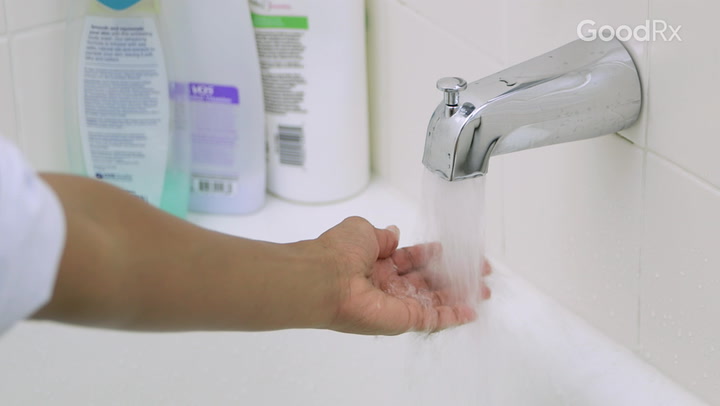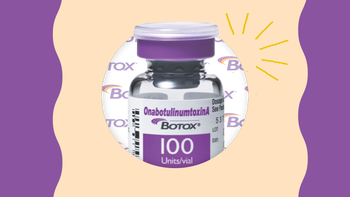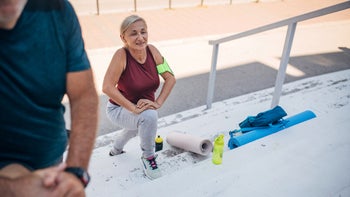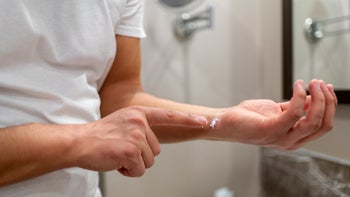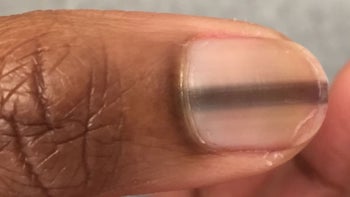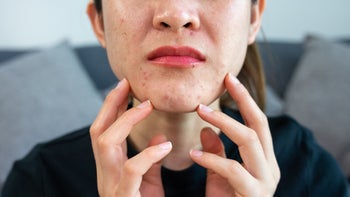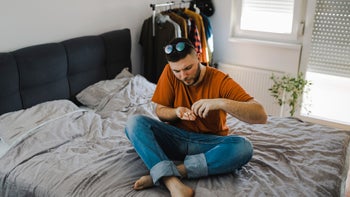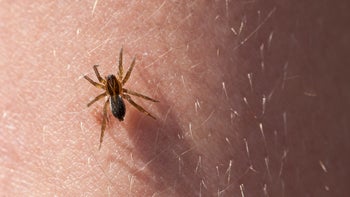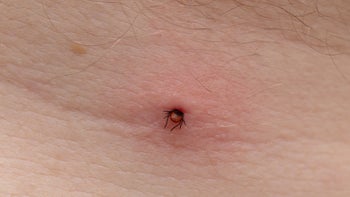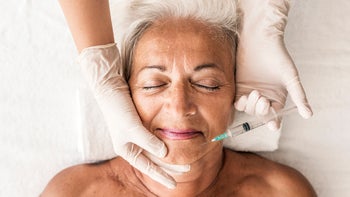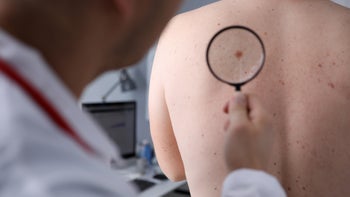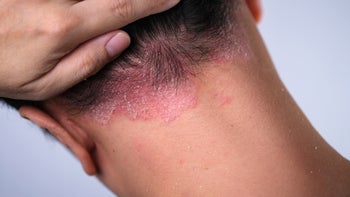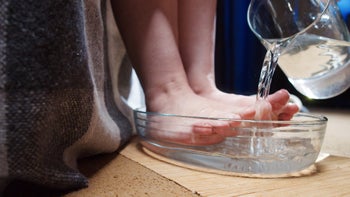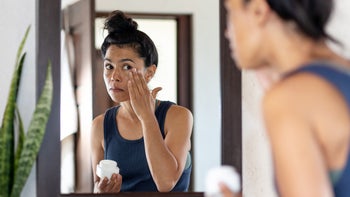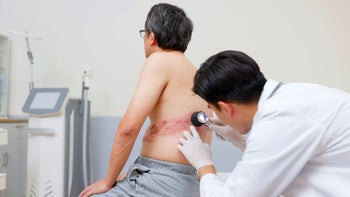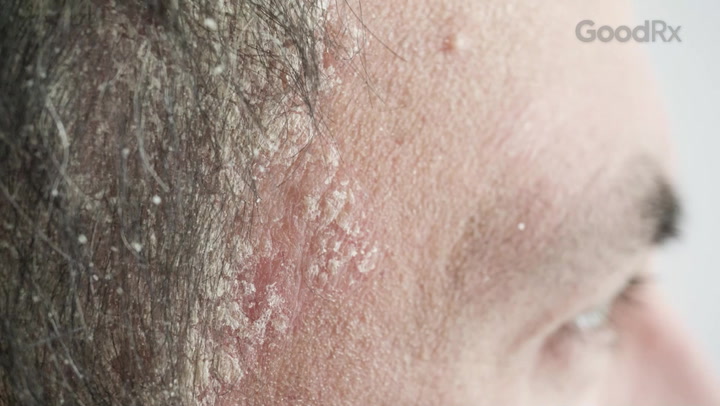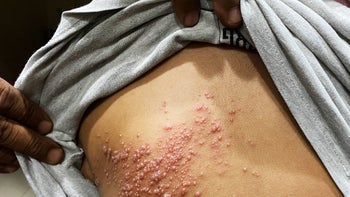
Pityriasis Rosea: Triggers and Treatment for This Common Skin Rash
Key takeaways:
Pityriasis rosea is a common skin rash. It starts off with a single area of skin redness (a herald patch).
Viruses are the most common trigger for pityriasis rosea.
Pityriasis rosea will clear up on its own without scarring.
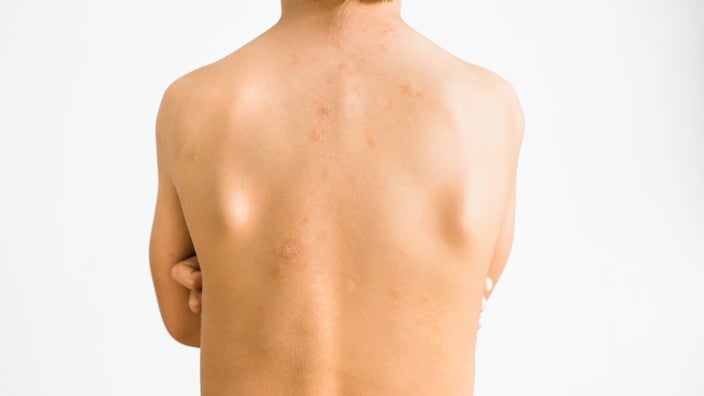
Developing a rash can be frustrating, anxiety provoking and down right uncomfortable. It’s hard to know if a rash is something you should worry about or whether you can watch it at home.
Pityriasis rosea is a common and harmless skin rash that you can treat at home. Here’s how to tell if you have pityriasis rosea and what you can do to take care of it.
What are the symptoms of pityriasis rosea?
Pityriasis rosea usually starts off as a single patch. This patch is called a “herald patch” because it appears before the rest of the pityriasis rosea rash. A herald patch is:
Oval or circular
Pink or red
Raised and bumpy
Scaly
Large, up to 2 inches across
Usually on the chest, stomach, or back
This patch might not be easy to spot, especially if it’s smaller or lighter colored. If you have darker skin, you might only notice the bumpiness. If the patch is on your back, you might not notice it at all.
The rest of the rash forms over the next 2 weeks. People develop small, oval patches along their skin folds. You might notice oval patches on your:
Back
Chest
Stomach
Upper arms
Thighs
These patches usually look like the herald patch but smaller. Once all the patches appear, they stick around for up to 8 weeks. They start to fade on their own and can peel as they disappear.
The patches don’t scar as they heal. But if you have a darker skin tone, the patches can leave behind skin discoloration that can take weeks (or longer) to fade.
Who is at risk for pityriasis rosea?
Anyone can develop pityriasis rosea. But teenagers and young adults are more likely to develop it.
It’s not as common for people over 30 years old to develop pityriasis rosea. Children can develop it, too. But pityriasis rosea is not a common skin rash in children.
What causes pityriasis rosea?
It’s not clear what causes pityriasis rosea, but research suggests that viruses trigger it. Many people develop pityriasis rosea 1 to 2 weeks after they’ve had symptoms of an upper respiratory tract infection, like fever or sore throat.
Studies show that many people develop pityriasis rosea after coming in contact with common viruses that may not cause any other symptoms. But other, more serious viruses like the flu and COVID-19 can trigger pityriasis rosea.
Some medications can also trigger pityriasis rosea, including:
Adalimumab (Humira)
Allopurinol (Zyloprim)
Atenolol (Tenormin)
Bupropion (Wellbutrin)
Lamotrigine (Lamictal)
Vaccines can also trigger pityriasis rosea, especially the flu shot and the hepatitis B vaccine.
How do you treat pityriasis rosea?
Pityriasis rosea will go away on its own. That means you don’t need to get any treatment or do anything but wait it out.
But the rash can be itchy, so you might want to try some things to soothe your itchy skin, like:
Taking a non-drowsy antihistamine
Using skin cream and lotion to keep your skin moist
Trying oatmeal baths to soothe your skin
Applying anti-itch lotions like calamine
If these methods aren’t enough to control your itching, talk to your healthcare provider. You may need prescription-strength steroid creams and anti-itch lotions.
If you’re pregnant and you develop pityriasis rosea, talk to your healthcare provider. If it’s early in your pregnancy, you may need treatment with additional medications like acyclovir.
What should you not do when you have pityriasis rosea?
Some things can irritate your skin and make the itching from pityriasis rosea worse.
If you have pityriasis rosea, be sure to avoid hot baths, saunas, and hot tubs. Hot temperatures can make your itching worse and dry out your skin.
How can you make pityriasis rosea clear up faster?
Right now there’s no clear evidence that anything can clear up pityriasis rosea faster. Researchers have looked into antibiotics, antivirals, and even UV (ultraviolet) light therapy.
Sometimes pityriasis rosea does clear up faster when people use these treatments. But they don’t work for most people, and they come with side effects. If your pityriasis rosea isn’t clearing up or it’s causing you a lot of discomfort, talk to your healthcare provider. It might be worth trying one of these options, but you’ll need to weigh the pros and cons carefully.
The bottom line
Pityriasis rosea is a common, itchy rash. Viral illness, like COVID-19, can trigger it. The rash starts off as a single, raised patch that’s bumpy. And then it spreads to the rest of the body from the top down.
Pityriasis rosea isn’t dangerous and will go away on its own. But that can take up to 8 weeks. There’s no treatment for pityriasis rosea, but antihistamines and oatmeal baths can relieve itching as it fades.
References
Amer, A., et al. (2007). The natural history of pityriasis rosea in Black American children: How correct is the ‘classic’ description?. JAMA Pediatrics.
Chuh, A., et al. (2004). Pityriasis rosea – Evidence for and against an infectious aetiology. Epidemiology and Infection.
Chuh, A., et al. (2016). A position statement on the management of patients with pityriasis rosea. Journal of the European Academy of Dermatology and Venereology.
Contreras-Ruiz, J., et al. (2019). Interventions for pityriasis rosea (review). Cochrane Database of Systematic Reviews.
Demirkan, S., et al. (2019). Does influenza subtype H1N1 have a place in the etiology of pityriasis rosea?. Postepy Dermatologii i Alergologii.
Drago, F., et al. (2009). Treatments for pityriasis rosea. SkinTherapyLetter.
Khalili, M., et al. (2022). COVID-19-associated pityriasis rosea in children: Case report and literature review. Clinical Case Reports.
Litchman, G., et al. (2022). Pityriasis rosea. StatPearls.
Villalon-Gomez, J. M. (2018). Pityriasis rosea: Diagnosis and treatment. American Family Physician.




